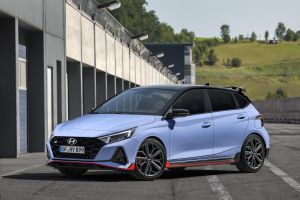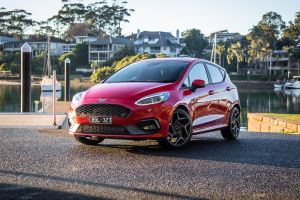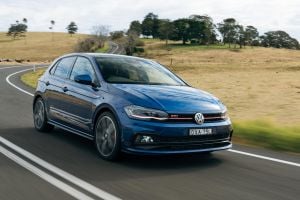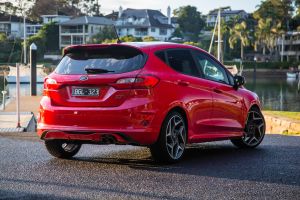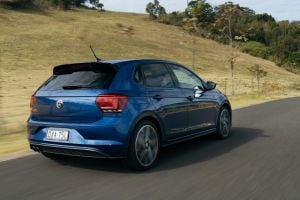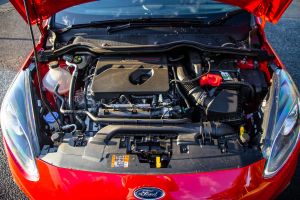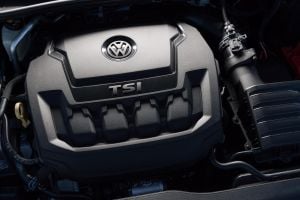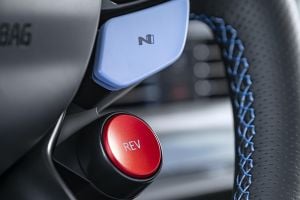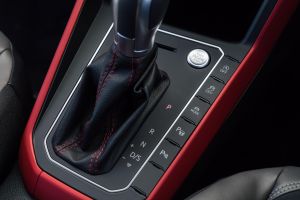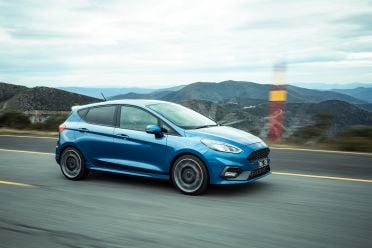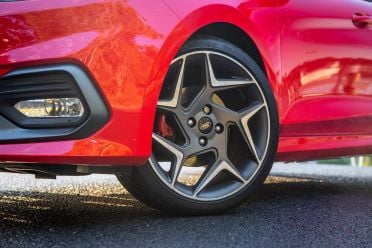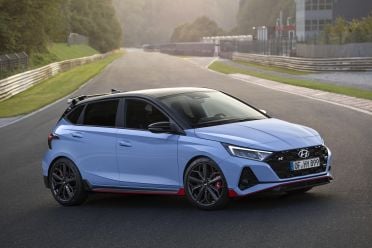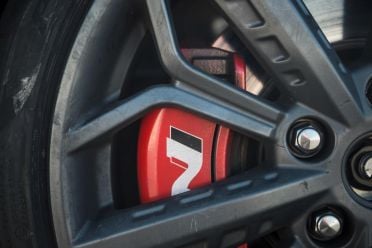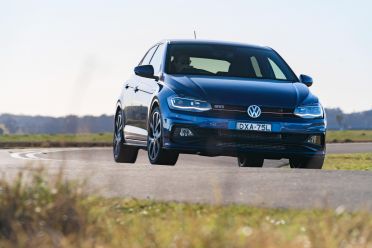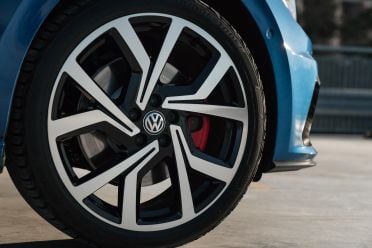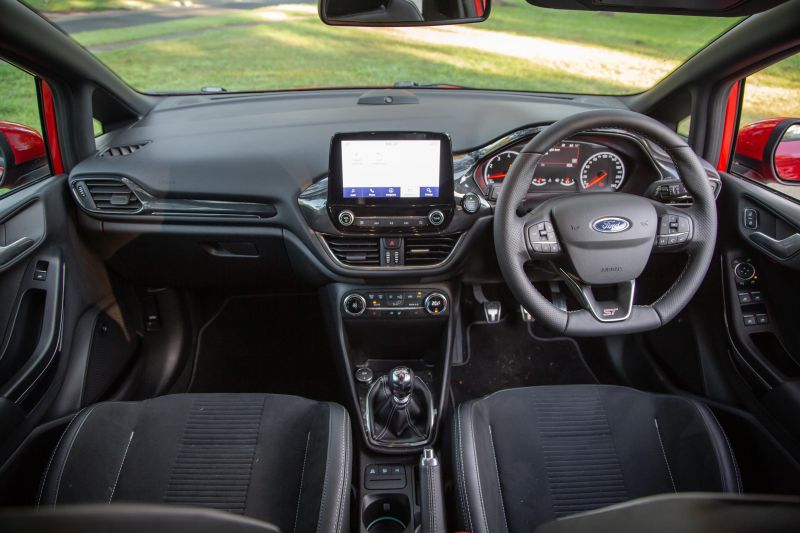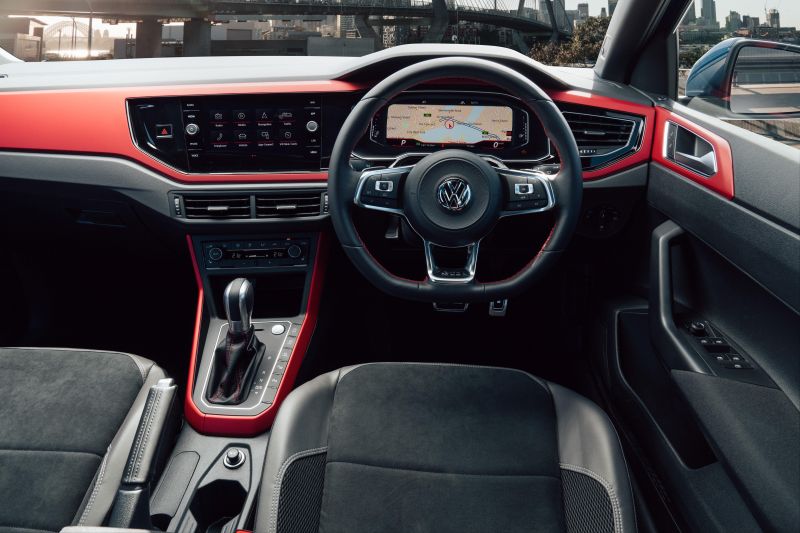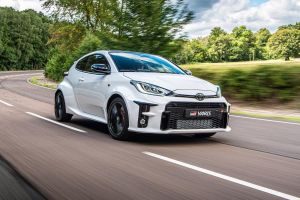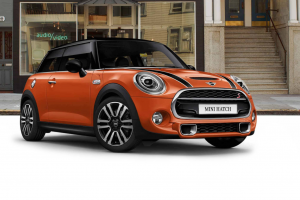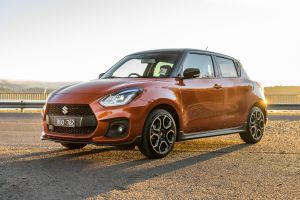Has there ever been a better time for hot hatch enthusiasts? And when we say ‘hot hatch’ in this context, we’re referring to the real midgets in the class.
The newly revealed (and lairy) Hyundai i20 N, which launches next year to tackle the acclaimed Ford Fiesta ST and grown-up Volkswagen Polo GTI, are all based on light cars, or superminis as the Brits might call them.
They follow in the wheel tracks of all-time greats like the Peugeot 205 GTI and Renault Clio R.S. 182, among a multitude of others. And notwithstanding the current lay of the landscape, we reckon they’ll each whet the appetites of World Rally championship fans.
And yes, I know I haven’t included the segment bookmarks – the Suzuki Swift Sport and Toyota Yaris GR. More on that later.
How much?
The Ford and Volkswagen both wear list prices below $35,000, and we full expect the Hyundai to sit in a similar spot once we know final Australian details.
- Ford Fiesta ST – $31,990 before on-road costs
- Volkswagen Polo GTI – $32,890 before on-road costs
- Hyundai i20 N – approx. $32k before on-road costs (not yet officially announced)
How tiny are they?
Very. The table below shows just how close this trio are, dimensionally speaking.
| Ford Fiesta ST | Hyundai i20 N | VW Polo GTI | |
|---|---|---|---|
| Length | 4068mm | 4075mm | 4067mm |
| Width | 1735mm | 1750mm | 1751mm |
| Height | 1469mm | 1440mm | 1438mm |
| Wheelbase | 2493mm | 2580mm | 2560mm |
| Weight | 1191kg | 1190kg | 1285kg |
What about their performance?
The Ford uses a tuned-up three-cylinder turbo making 147kW of power at 6000rpm and 290Nm of torque way up at 4500rpm. The engine is mated to a six-speed manual gearbox and drives the front wheels. Ford’s 0-100km/h claim is 6.5 seconds.
The Hyundai has the latest iteration of the widely used 1.6-litre turbo-petrol four-cylinder, making 150kW of power at 5500rpm and 275Nm of peak torque between 1750 and 4500rpm. Like the Ford, it’s FWD and six-speed-manual only.
The Vee-Dub has the largest-displacement engine here. The 2.0-litre unit pushes out 147kW of power at 6000rpm and a meaty 320Nm of torque between 1450 and 4390rpm. Unlike the other pair, it uses a dual-clutch (DSG) auto with paddles and familiar FWD.
Note the power-to-weight discrepancies in the table below.
| Ford Fiesta ST | Hyundai i20 N | VW Polo GTI | |
|---|---|---|---|
| List price | $31,990 | TBC | $32,890 |
| Displacement | 1.5-litre | 1.6-litre | 2.0-litre |
| Induction | Turbo | Turbo | Turbo |
| Cylinders | Three | Four | Four |
| Power | 147kW | 150kW | 147kW |
| Torque | 290Nm | 275Nm | 320Nm |
| Gearbox | 6 MT | 6 MT | 6 DSG |
| 0-100km/h claim | 6.5 sec | 6.7 sec | 6.7 sec |
| Power-to-weight | 123.4kW/t | 126kW/t | 114.4kW/t |
| Driven wheels | FWD | FWD | FWD |
| Wheel size | 18-inch | 18-inch | 17-inch |
| LSD type | Mechanical | Mechanical | Electronic |
What dynamic tricks do they have?
Ford:
The suspension comprises MacPherson struts up front and a torsion beam at the rear. It wears Michelin Pilot Super Sport rubber, and has red brake calipers (discs 278mm front and 253mm rear) behind its 18-inch alloy wheels.
It has launch control and a shift indicator, while torque steer is tamed up front by a mechanical limited-slip diff (LSD). The steering system is a motor-driven rack-and-pinion with a ratio of 12:1. There are clever Tenneco twin-tube front and mono-tube rear dampers.
Hyundai:
Like the Ford, the i20 pairs independent front suspension with a rear torsion beam. It wears Pirelli P-Zero tyres and Hyundai claims to have bumped up the diameter of the front brakes by 40mm over the non-N i20 models.
As well as launch control you get five changeable driving modes to adjust the ESC tune, steering resistance, and throttle mapping to suit your mood. The manual gearbox has a downshift rev-matching system too. The EPAS system has a steering ratio of 12:0. A mechanical LSD is fitted.
Volkswagen:
This Polo GTI has a different spring rate and therefore sits lower than its non-performance siblings. It also runs a MacPherson strut/torsion beam suspension setup, and has ventilated discs at the front and solid discs at the rear with red calipers. Dimensions are not provided.
The VW’s driving modes stretch further by offering multi-mode Sport Select Suspension with button-adjustable dampers. The steering is EPAS and linked to the drive modes. Rather than a mechanical LSD the Polo has an Extended Electronic Differential Lock that uses the stability control system to tame a spinning front wheel.
Cockpits
Ford:
The basics are covered: leather wheel, metallic scuff plates and pedals, a dark headlining, and grippy Recaro bucket seats up front.
The centre touchscreen is 8.0 inches and runs Apple CarPlay and Android Auto, plus sat-nav with live traffic updates and DAB+. The sound system is made by B&O and has 10 speakers.
Standard fare includes climate control, rain-sensing wipers, a digital speedo, proximity key, and active safety systems such as AEB that senses pedestrians and cycles, blind-spot monitoring, rear cross-traffic alert, and speed-sign recognition.
Hyundai:
Changes over the base i20s include sport seats, an N steering wheel and shifter, and metal pedals. The interior is available only in black, albeit with blue accents throughout.
A digital instrument cluster is reportedly standard, while a larger 10.25-inch touchscreen infotainment system with Android Auto and Apple CarPlay is available too.
The i20 N comes with Hyundai’s SmartSense safety suite, which includes autonomous emergency braking with pedestrian and cyclist detection, as well as lane-following assist, intelligent speed limit assist, lane-keeping assist, lane-departure warning, blind-spot monitoring, driver attention monitoring, adaptive high-beam and rear cross-traffic alert.
Volkswagen:
Personally I’d go for the signature tartan cloth seats, but you can option up into leather as pictured. The flat-bottom wheel with red stitching, and bright red cabin accents around the 8.0-inch touchscreen, liven up the inside.
The basics are covered – proximity key and climate control for example – though there are some options packs. The Sound & Vision Pack ($1900) adds the 10.25-inch digital instrument cluster with maps, sat-nav software, a wireless phone charger, and 300W sound system. The Luxury Package (a hefty $3900) adds 18-inch wheels, LED headlights and a sunroof.
City speed AEB is standard, but you need to fork out $1500 for the Driver Assistance Package for active cruise control, auto-dipping kerbside mirror, Park Assist, and a blind-spot monitor, among other features.
What about the absentees?
Toyota Yaris GR:
Yes, the first batch of 1000 were sold for a special $39,950 price point and the next hundred for $44,950, but the official RRP is actually $49,500 from here on in. The Yaris is also in another league, performance-wise. Its triple-cylinder engine has 200kW and 370Nm, and it’s AWD. Plus it only has three doors.
Mini Cooper S:
Three-door models kick off at $41,200, and five-door models from $42,450. While the 141kW/280Nm and 3850mm – 4005mm Brits stack up mechanically, the price premium makes them more a rival to a Focus ST, i30 N, or Golf GTI.
Suzuki Swift Sport:
At $29,990 (manual) or $31,990 (auto), the Swift Sport is priced right, and similar dimensionally to this trio. And while its 1.4-litre turbo only makes 103kW/230Nm, its 945kg tare mass gives it a competitive 109kW/t power-to-weight ratio.
In all honesty, the Swift is worth considering, though it’s slightly outclassed by the Fiesta and Polo (I haven’t driven an i20 N yet). Haggle.
Want to read more?
- MORE: 2020 Ford Fiesta ST review
- MORE: Ford Fiesta ST video
- MORE: 2021 Hyundai i20 N review: Prototype track test
Did you like the spec-sheet comparison? There are more to be found here.
- 2021 Lexus IS 300 F Sport v BMW 330i: Executive sedan spec comparison
- 2021 Hyundai i30 Elite v Toyota Corolla ZR spec comparison
- 2021 LDV Deliver 9 v Renault Master: Bargain van spec comparison
- 2021 Ford Puma v Skoda Kamiq: Specs compared on the two newest small SUVs
- 2021 Hyundai i30 N and Mk8 Volkswagen Golf GTI: Specs compared

